Top 7 Most Beautiful Historical Sites in Andorra
Located high in the eastern Pyrenees mountains between France and Spain, Andorra is a small country, boasting lovely mountain scenery, which is often ... read more...overlooked on travel itineraries. Find out more about the best places to visit in this tiny country with list of the most beautiful sites in Andorra.
-
Given the importance of the textile sector in the parish, the architect Josep Danés designed the Church of Sant Pere Màrtir as a building dedicated to wool-makers. The Church of Sant Pere Màrtir is Neo-romanesque in style and features a bell tower. It was built in 1956 and is made of granite stone. The main altarpiece is thought to have been built with the help of the Brotherhood of Wool Makers and Weavers. The exterior facade is decorated with ceramic and prints on the Beatitudes by sculptor Sergi Mas, as well as an Immaculate Conception by sculptor Josep Viladomat. The Mercy statue inside the temple was created by the same sculptor.
Around the church, there's a sculpture of a lace-maker, or "puntaire," as well as different examples of classic Andorran architecture, such as Josep Viladomat's La Tosca and Engordany bridges. The Viladomat Museum (sculpture), the Romanesque Art Models Museum, and the Exhibition Hall of the Commune of Escaldes-Engordany are all housed at the Escaldes-Engordany Art Centre, CAEE, which is located at Avinguda Carlemany 30.
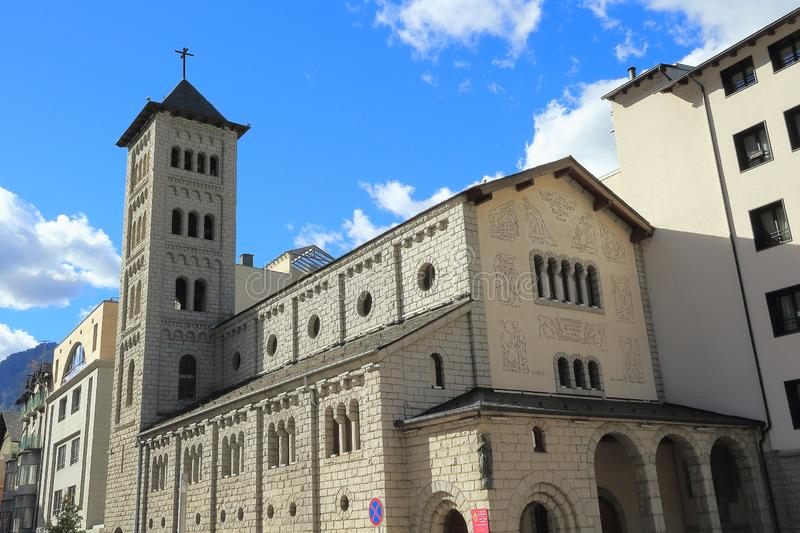
Dreamstime.com 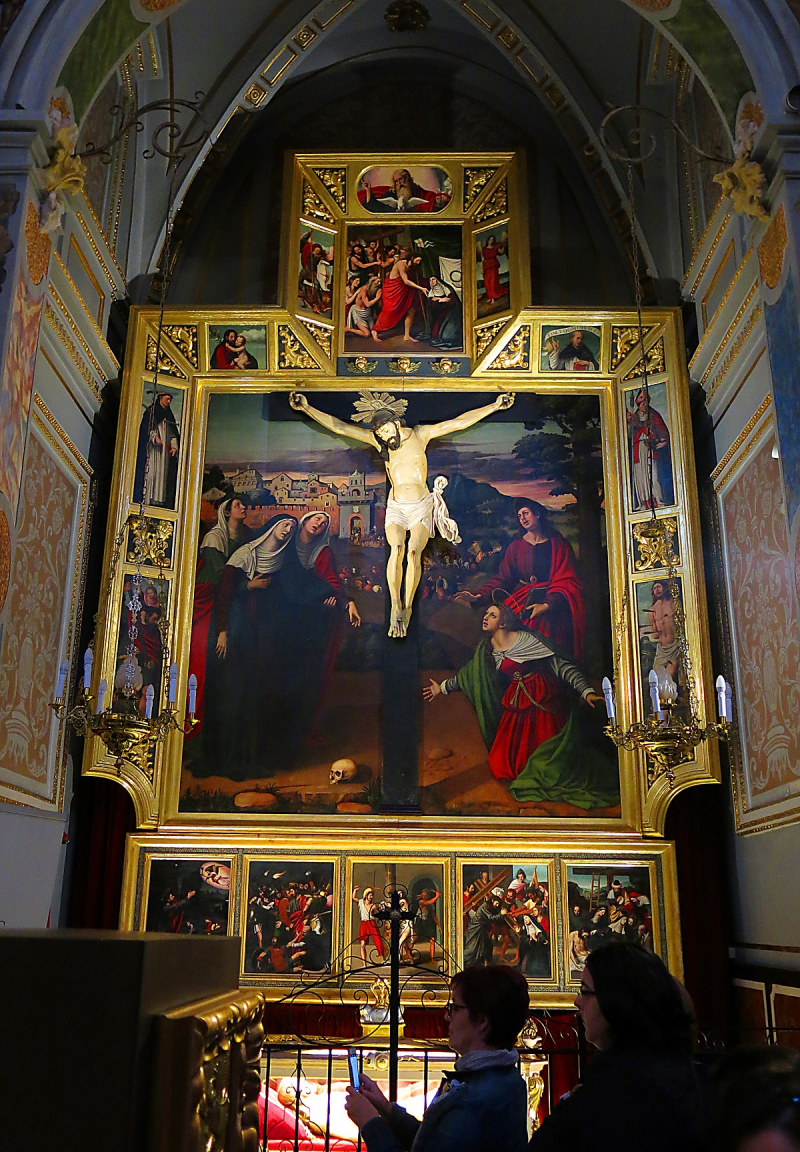
Dreamstime.com -
The village of La Cortinada is one of Andorra's most appealing little settlements. The picturesque 12th-century Church of Sant Mart de la Cortinada (Església de Sant Mart de la Cortinada) is located in the settlement, which is surrounded by meadows and steep mountains. The Romanesque frescoes, charnel-house, and lovely ancient dovecot distinguish this well-preserved medieval chapel of worship. Locally created excellent wrought-iron railings, a vividly painted wooden altarpiece, numerous fine pieces of intricate furniture, and a confessional were later additions from the 17th and 18th centuries.
El Serrat, a charming village worth visiting, is another place worth seeing. This mountain community, located at the end of the road that runs through the Valira del Nord Valley, is in a stunning setting and makes for an excellent base for exploring the surrounding region. It's popular with birdwatchers, hikers, and those interested in alpine flora. In the winter, downhill skiing and snowboarding, as well as Nordic skiing and snowshoeing, become popular hobbies.
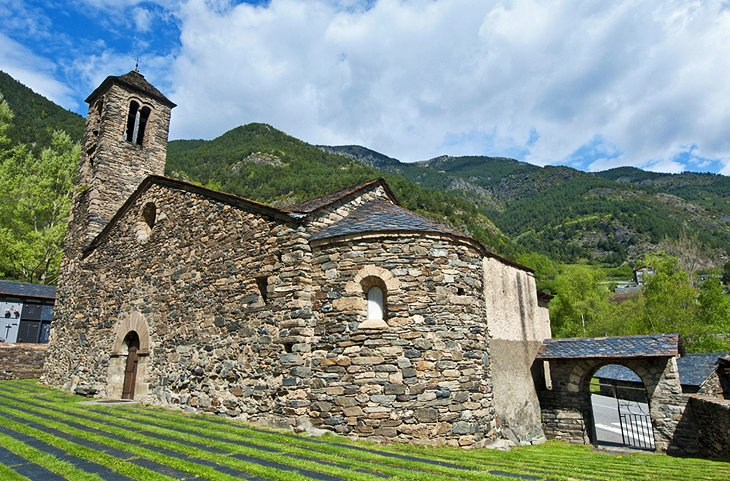
Visit Andorra 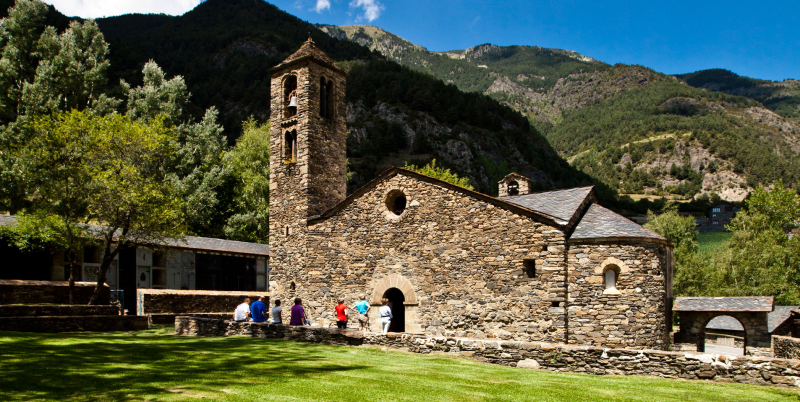
Visit Andorra -
Our Lady of Meritxell (Mare de Déu de Meritxell), Andorra's patron saint, is revered as the country's spiritual guardian. She is also the topic of a significant event that has been held on September 8th, the same day as the Andorran National Holiday, since 1873. This Roman Catholic saint is depicted by a statue of the Virgin Mary holding the newborn Jesus in her lap at the Meritxell Chapel. The original statue of Baby Christ, created in the 12th century, was destroyed in a fire.
On January 6, in the late 12th century, residents from Meritxell on their way to Mass in Canillo discovered a wild rose in bloom. It was out of season, and there was a statue of the Virgin and Child at its foot. The statue was installed in the church of Canillo. The statue, however, was discovered the next day under the same wild rose. The statue was moved to Encamp's church. The statue, however, was discovered under the same wild rose the next day, as it had been before. The residents of Meritxell regarded this as a sign and chose to build a new chapel in their town after seeing an open space miraculously unaffected by the winter snows, as in similar legends elsewhere.
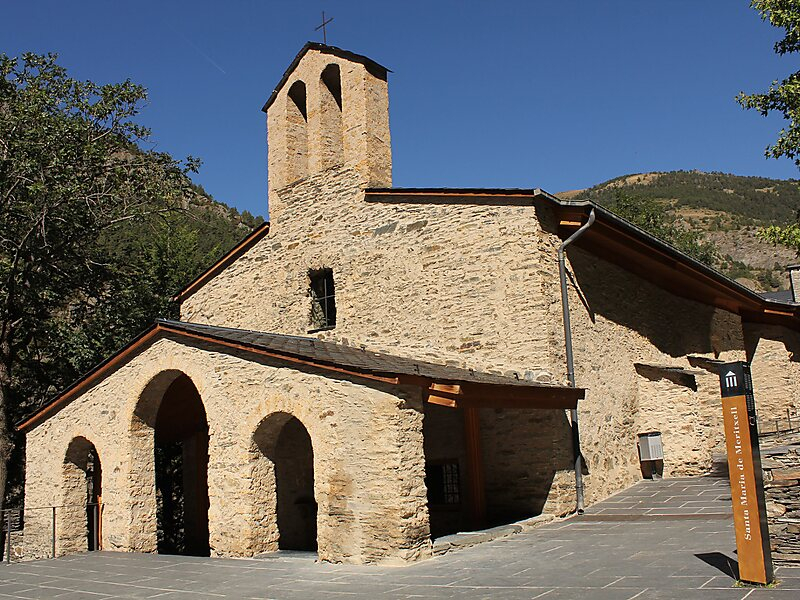
Sygic Travel 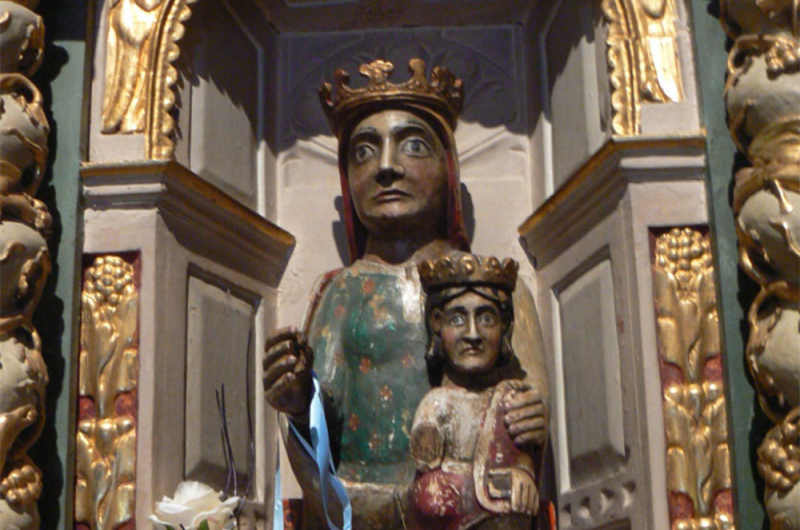
BinSpain -
The Church of Santa Coloma is one of the most ancient and beautiful historical sites in Andorra. It comprises a rectangular nave and a quadrangular apse and dates from the pre-Romanesque period, between the 8th and 9th centuries. The four-story Lombard-style circular bell tower was constructed around the 12th century, giving it its current look. It's the only one in Andorra and one of the Pyrenees' few.
The entire chancel of the church was covered in fresco murals that have been historically assigned to the Master of Santa Coloma, albeit they are not the work of just one artist. Many of the Romanesque paintings in Andorra and the Pyrenees are the result of nomadic painter workshops receiving the same instruction, prompting specialists to talk of schools like the Master of Santa Coloma's.
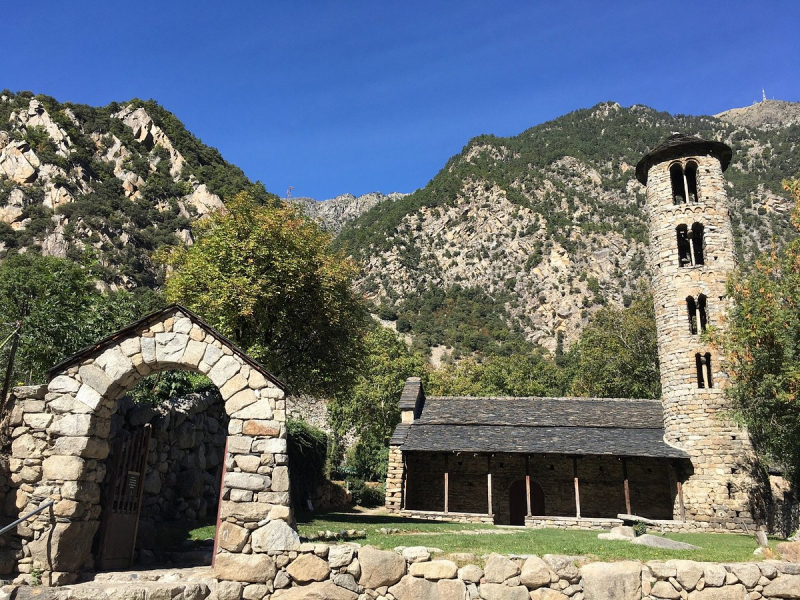
TripAdvisor 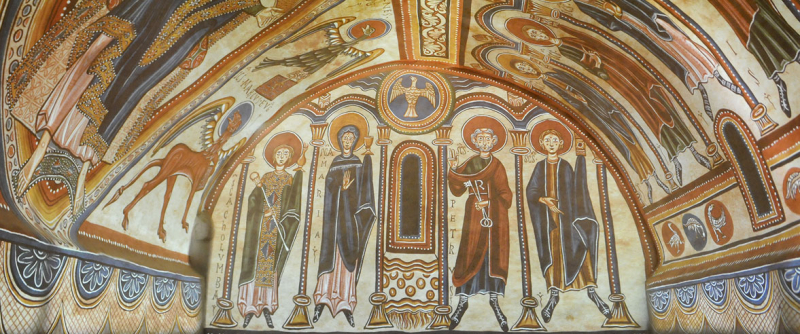
Visit Andorra -
Casa de la Vall is one of the most beautiful historical sites in Andorra. It is open to visitors and is located in the center of Andorra la Vella's ancient town. The most essential aspects of its history, as well as the most fascinating aspects of its interior and exterior, are described here.
Casa de la Vall was erected as a manor home for the Busquets family in the late 16th century on a rocky outcropping overlooking the Valira Valley. It was bought by the Consell General, the Parliament of Andorra, in 1702, and served as its headquarters until 2011. It was the meeting place for representatives from the country's parishes, as well as the seat of justice. It had a comprehensive makeover in 1962 to improve its physical condition, give the building a sense of unity, and provide a better main session space. The Consell General relocated to a new building in Andorra la Vella in 2011.
Casa de la Vall has a number of unique rooms and surprises for guests, including a quadrangular floor plan and three galleries, which are typical of stately residences. The ground floor and two above floors make up the building's interior. On the outside, there's a plaza where you can see the dovecote and the building's façades, which are made of traditional lime and sandstone mortar. The main entrance contains granite keystones, and the gabled rooftop is made of slate. The square also has new sculptures commemorating some of Andorra's most important historical events, such as the signing of the Pariatge or the 1993 constitutional referendum.
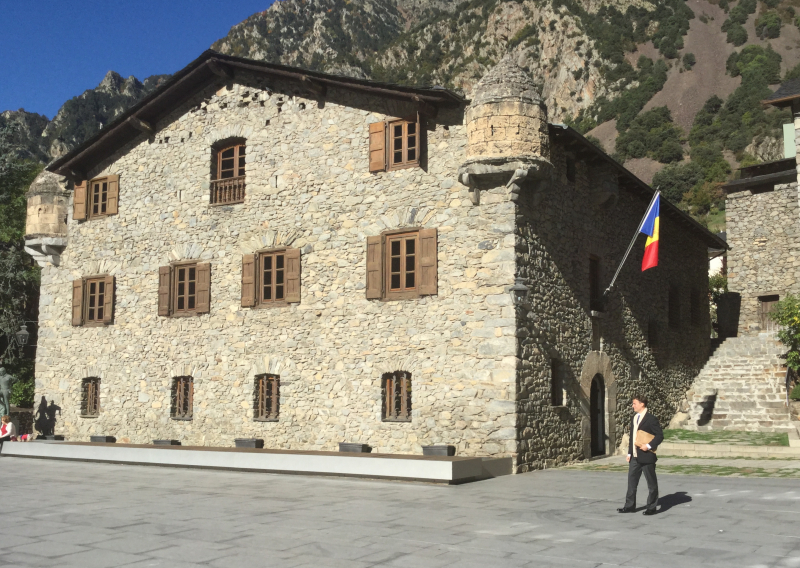
Wikipedia 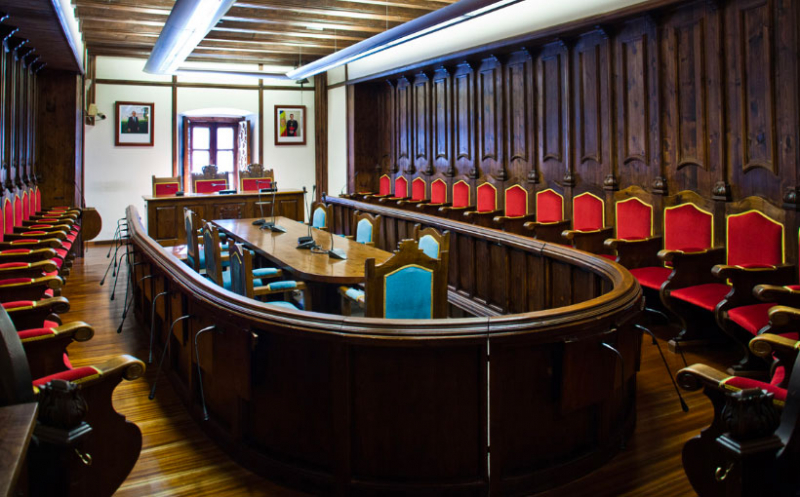
Principado de Andorra -
Photographers will find it to be one of Andorra's most attractive locations. The town is home to Casa d'Areny-Plandolit, one of the most beautiful historical sites in Andorra, in addition to its tranquil streets, tiny shops, exquisite hotels, and old churches. It is the only stately home in Andorra that has survived the test of time. The family's social prominence is owed to Guillem d'Areny-Plandolit, Baron of Senaller and Gramenet and the First Syndic of the General Council of the Andorra Valleys, who spearheaded the New Reform of 1866. He is well-known in Andorra's history for his work in the iron forges, which was one of the most prominent industries of the time.
The original structure dates from the 12th century and has undergone various renovations. The trip transports you to 19th and 20th century Andorra, where you will see many things that are unique and peculiar to this family, who were very influential between 1600 and 1900, being the only family with noble titles in the principality at a time when luxuries and comforts were non-existent.
You may also see the Andorra National Auditorium and the estate's gardens, which are both right next door. The Andorra Rural Habitat Circuit includes the Casa d'Areny-Plandolit. Your visit, which will last approximately an hour, can be done with either an audio guide or a guided tour. This museum contains a shop on the premises, as well as a restaurant. This museum has a shop inside and also offers activities for school groups and families.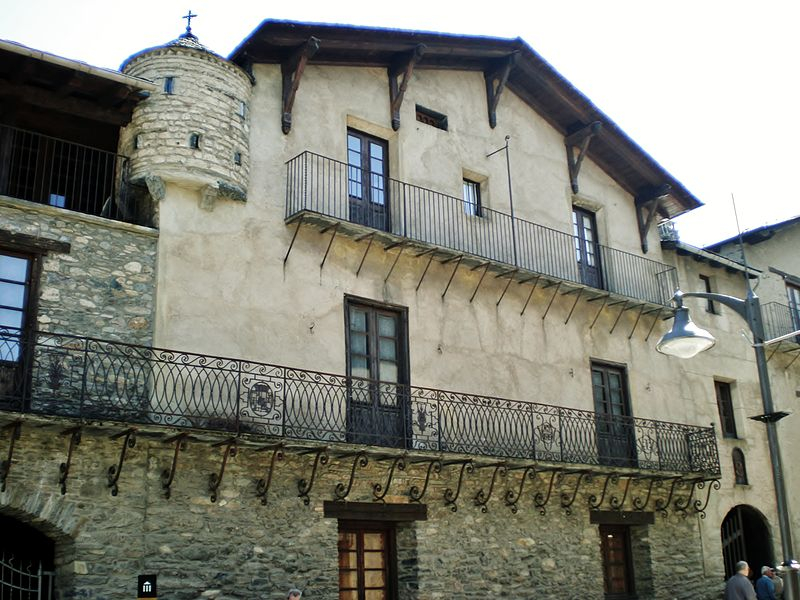
Wikipedia 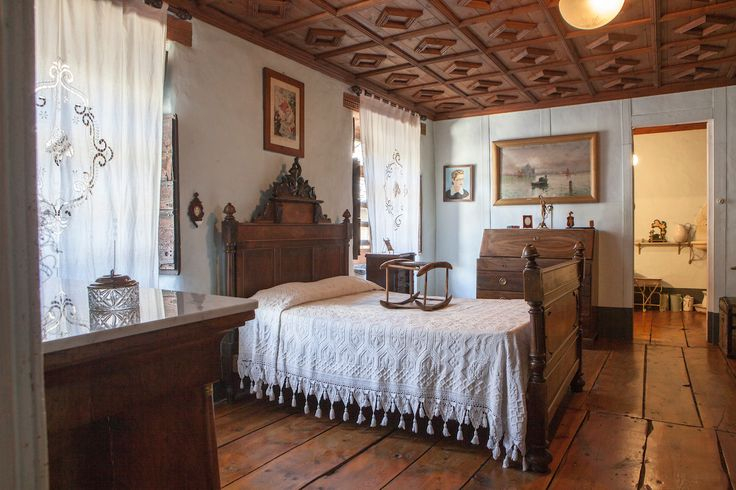
Visit Andorra -
The Romanesque Church of Saint Esteve was significantly altered in the twentieth century. The semi-circular apse, which represents the Romanesque mural paintings presently distributed between the Catalan National Art Museum and two private collections, dates from the Romanesque periods. The figure of a winged bull, the Marriage of Cana, and Christ before Pilate are just a few of the pictorial complex's parts conserved in the Catalan National Art Museum.
Inside the temple, there is a multi-coloured wooden beam from the same period and two baroque altarpieces. Of particular note too is the "Painting of the Souls" from the 18th century. Outside, you can see the semi-circular apse preserving its original Lombardian decoration, and the bell tower and Romanesque tower. The restoration made in 1940 by the modernist architect Josep Puig and Cadafalch focused on remodeling the bell tower and the present side entrance.
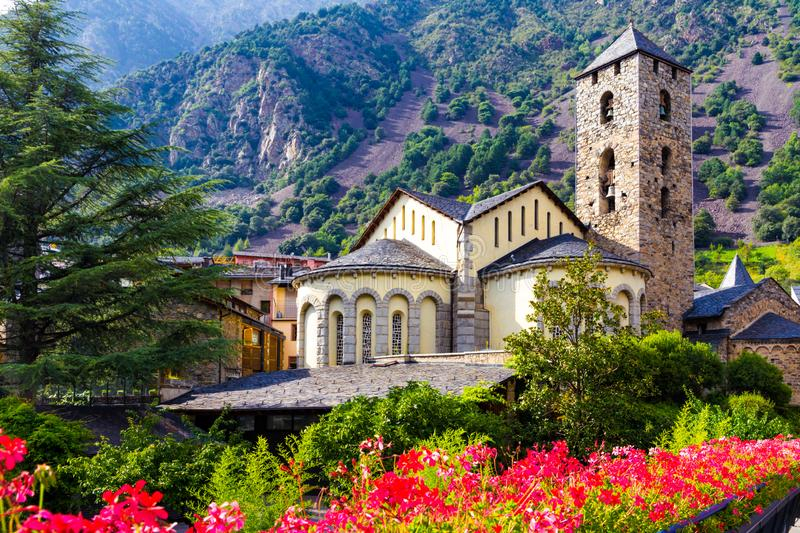
Dreamstime.com 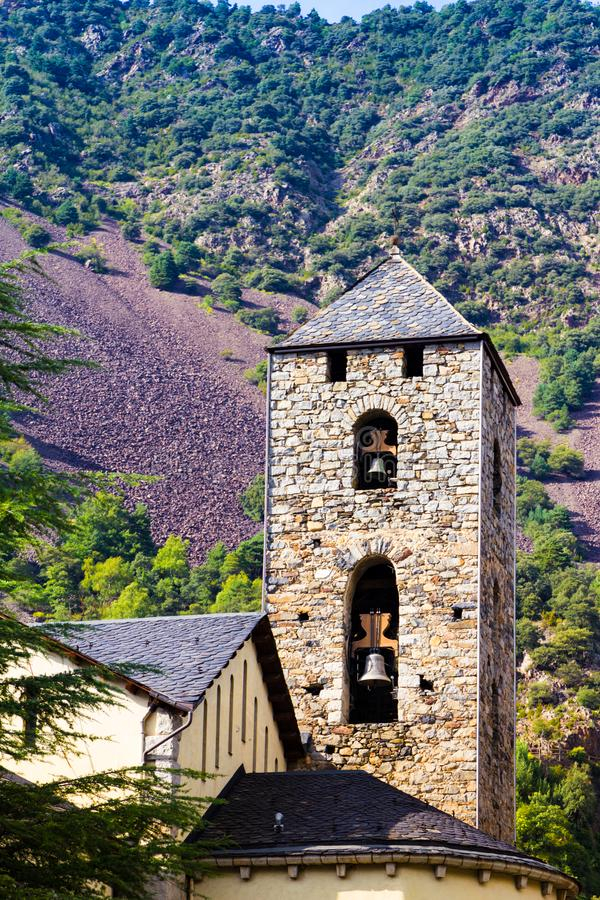
Dreamstime.com




























